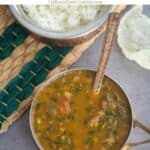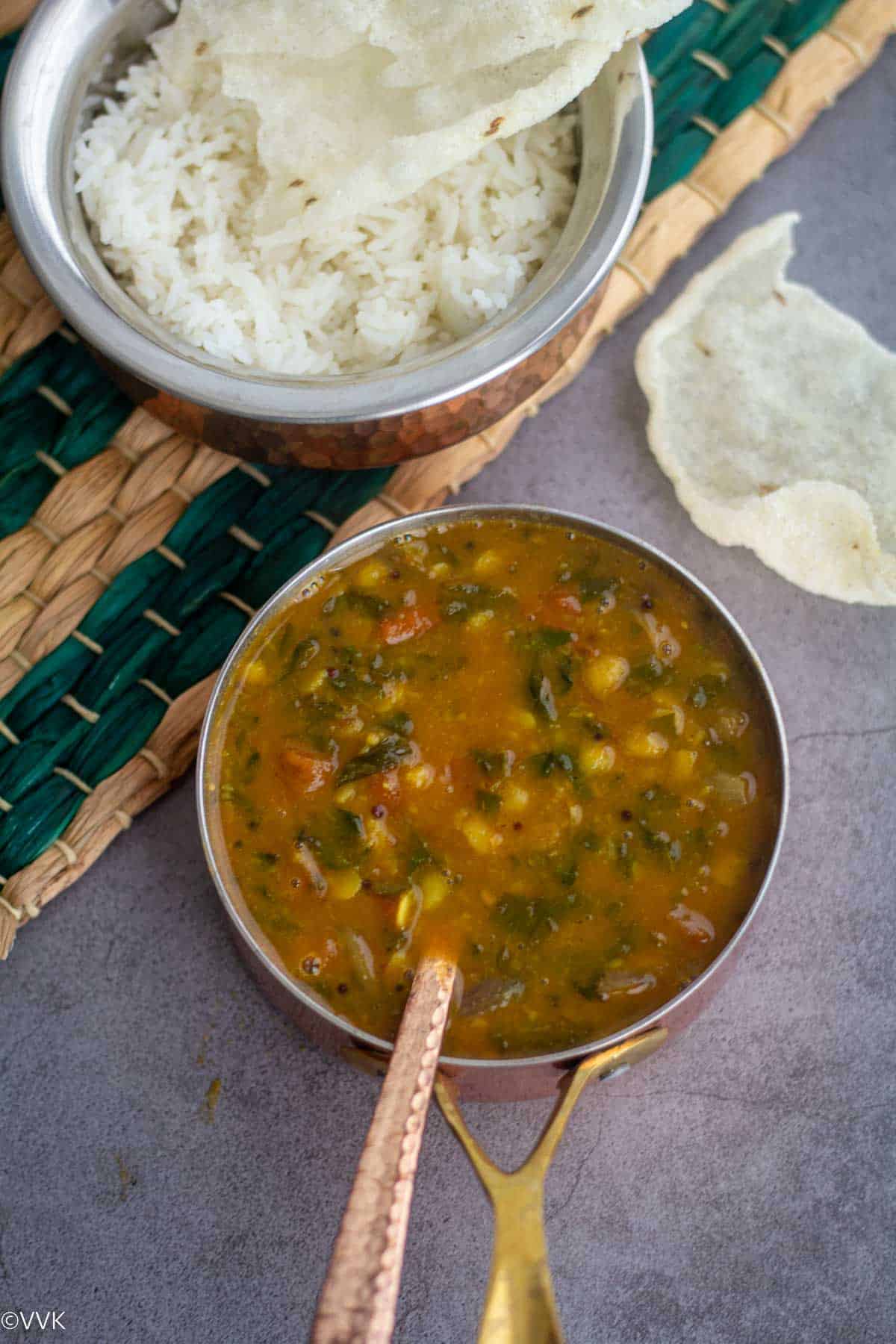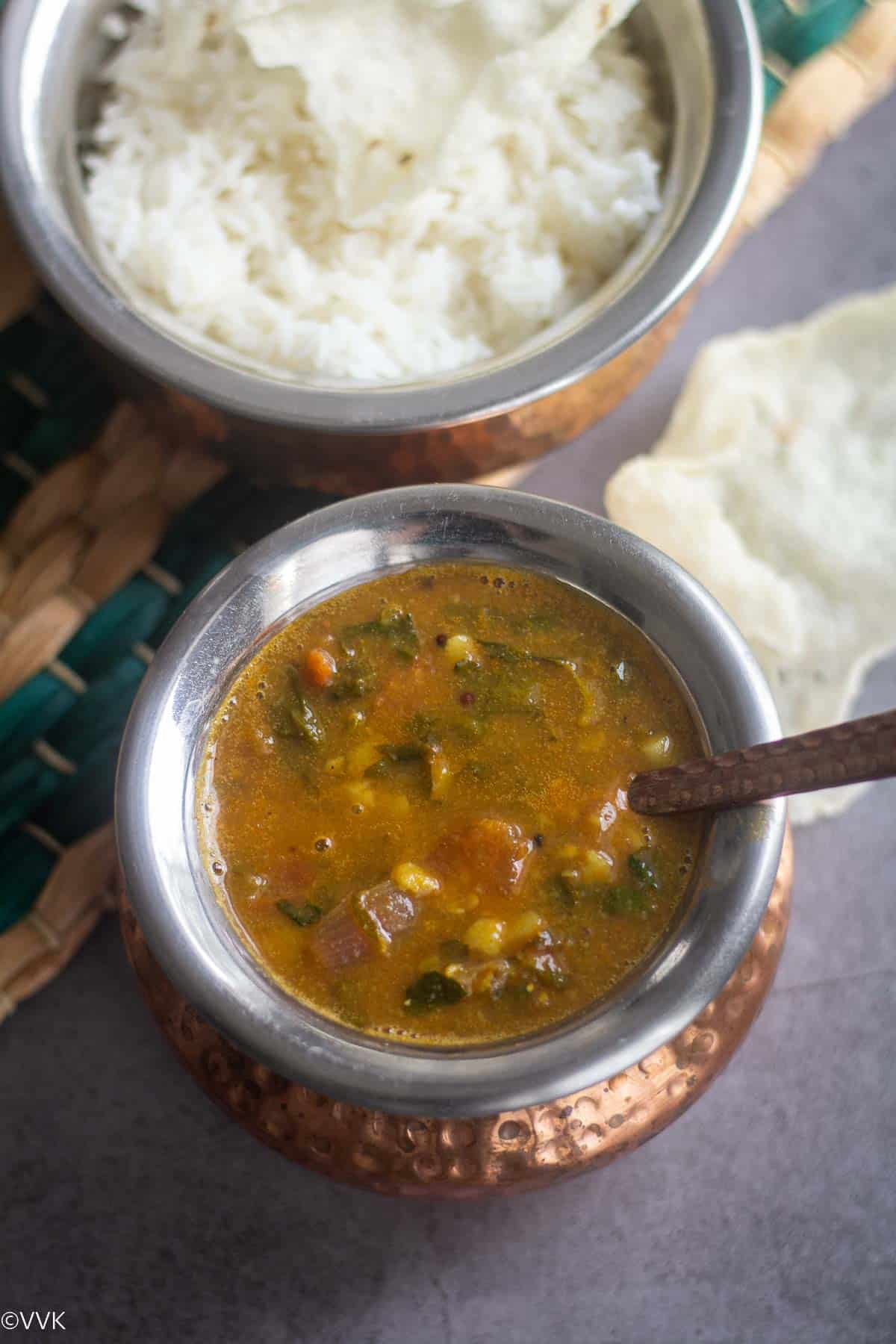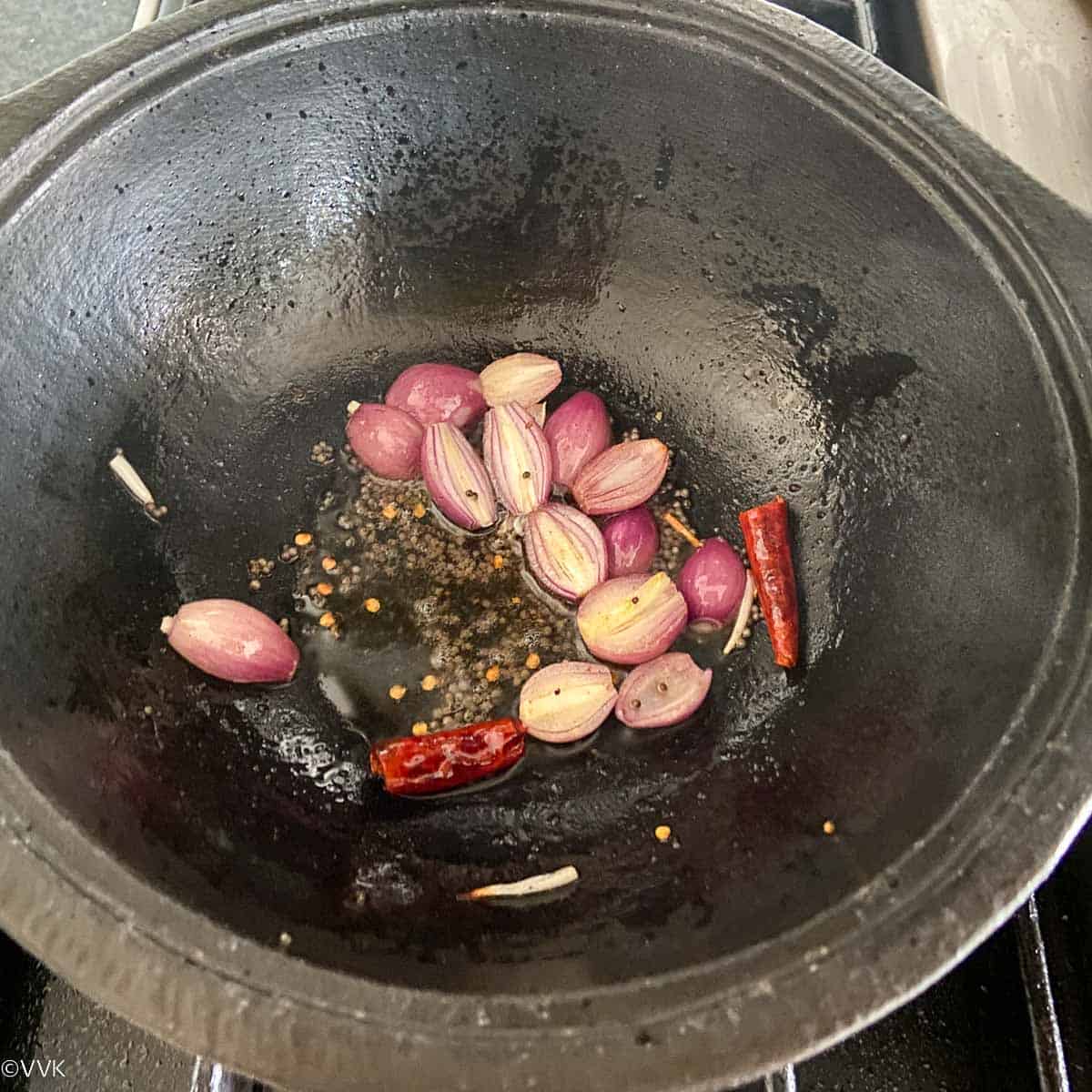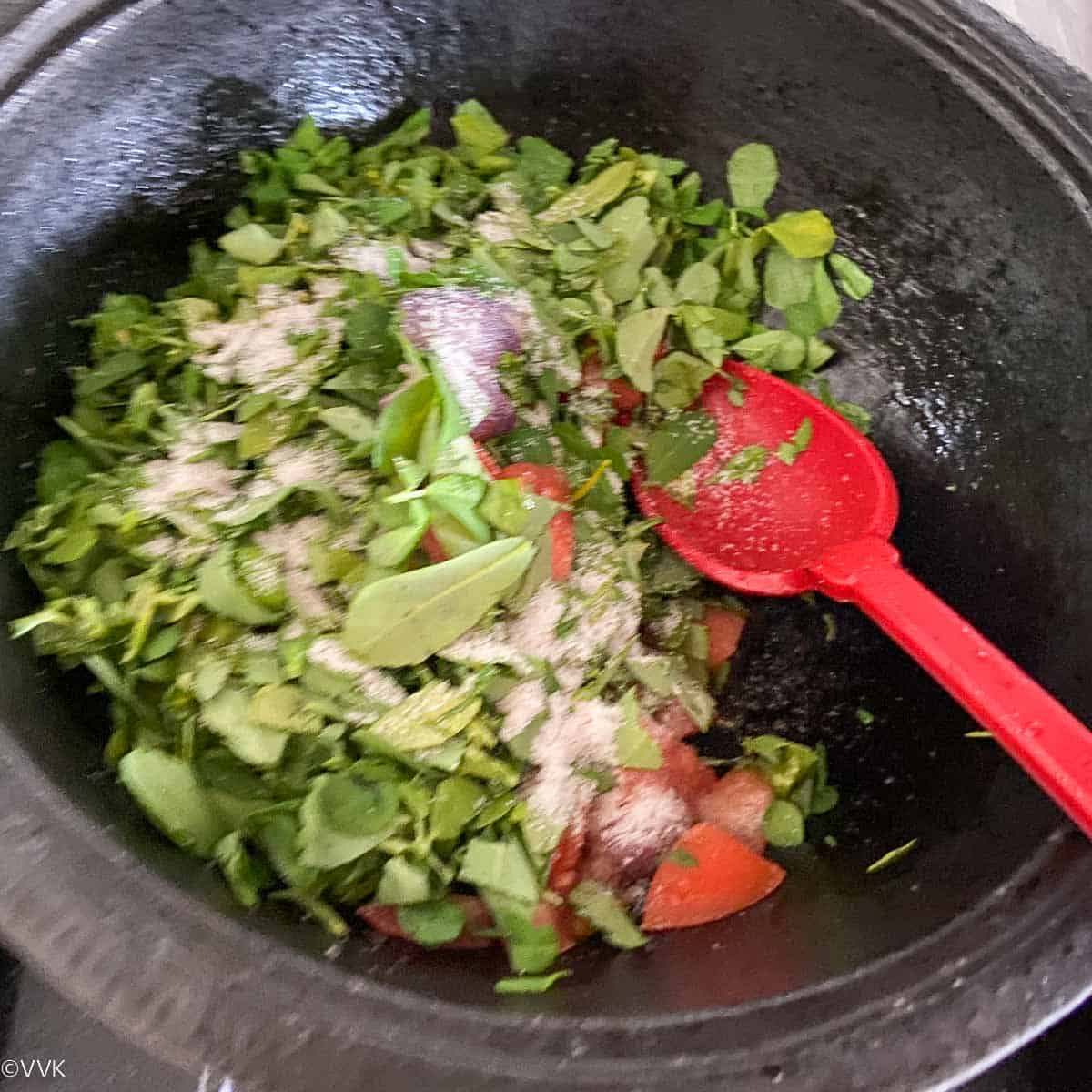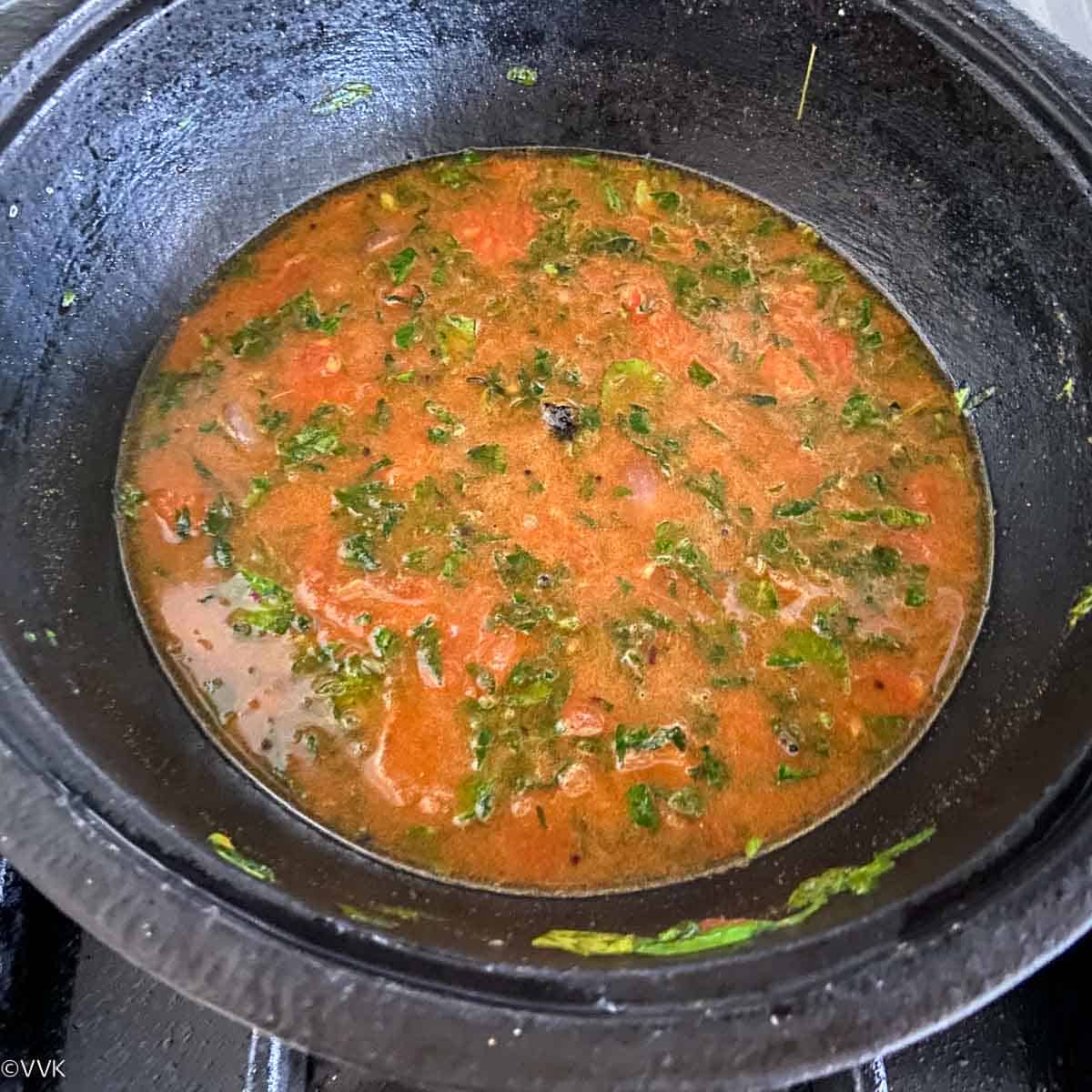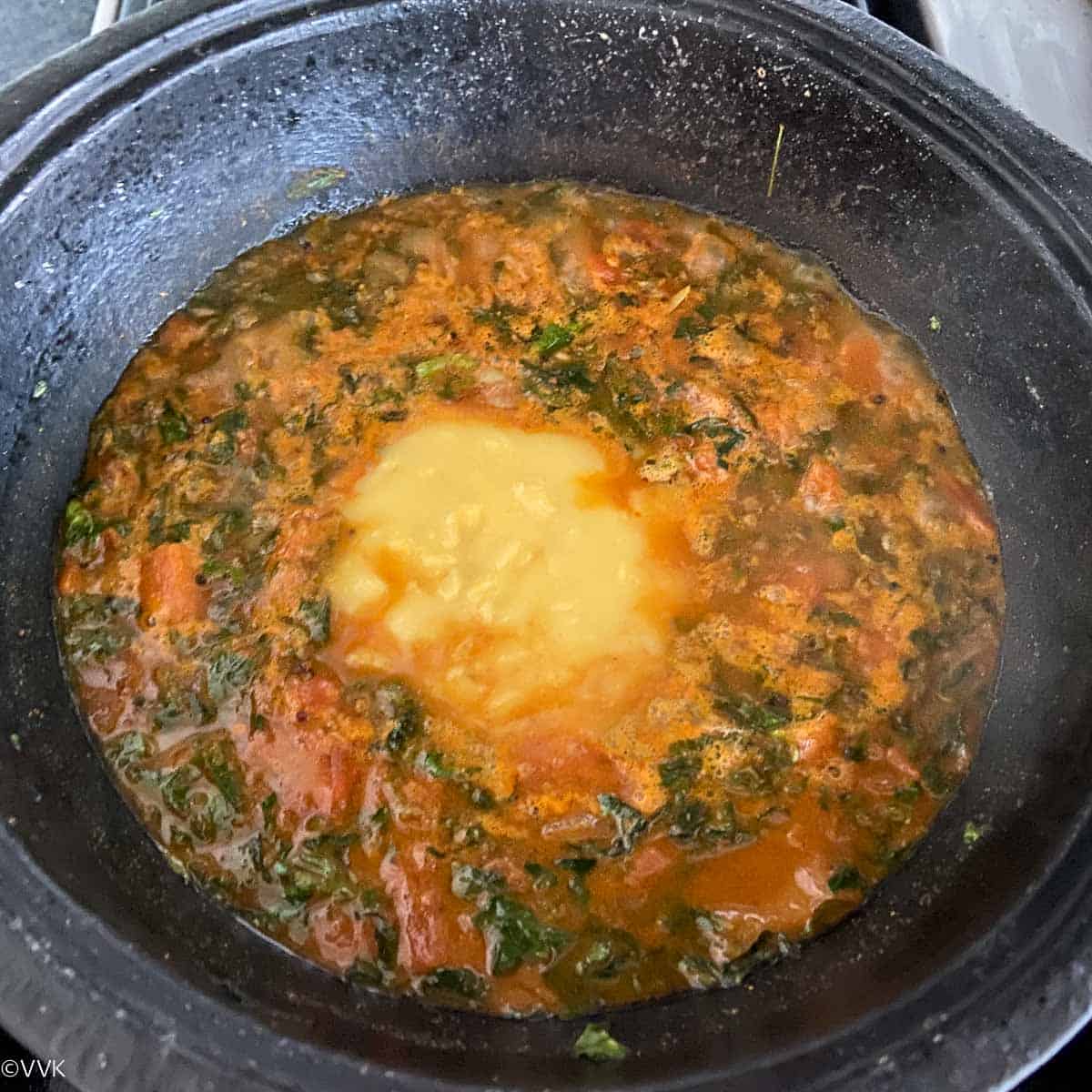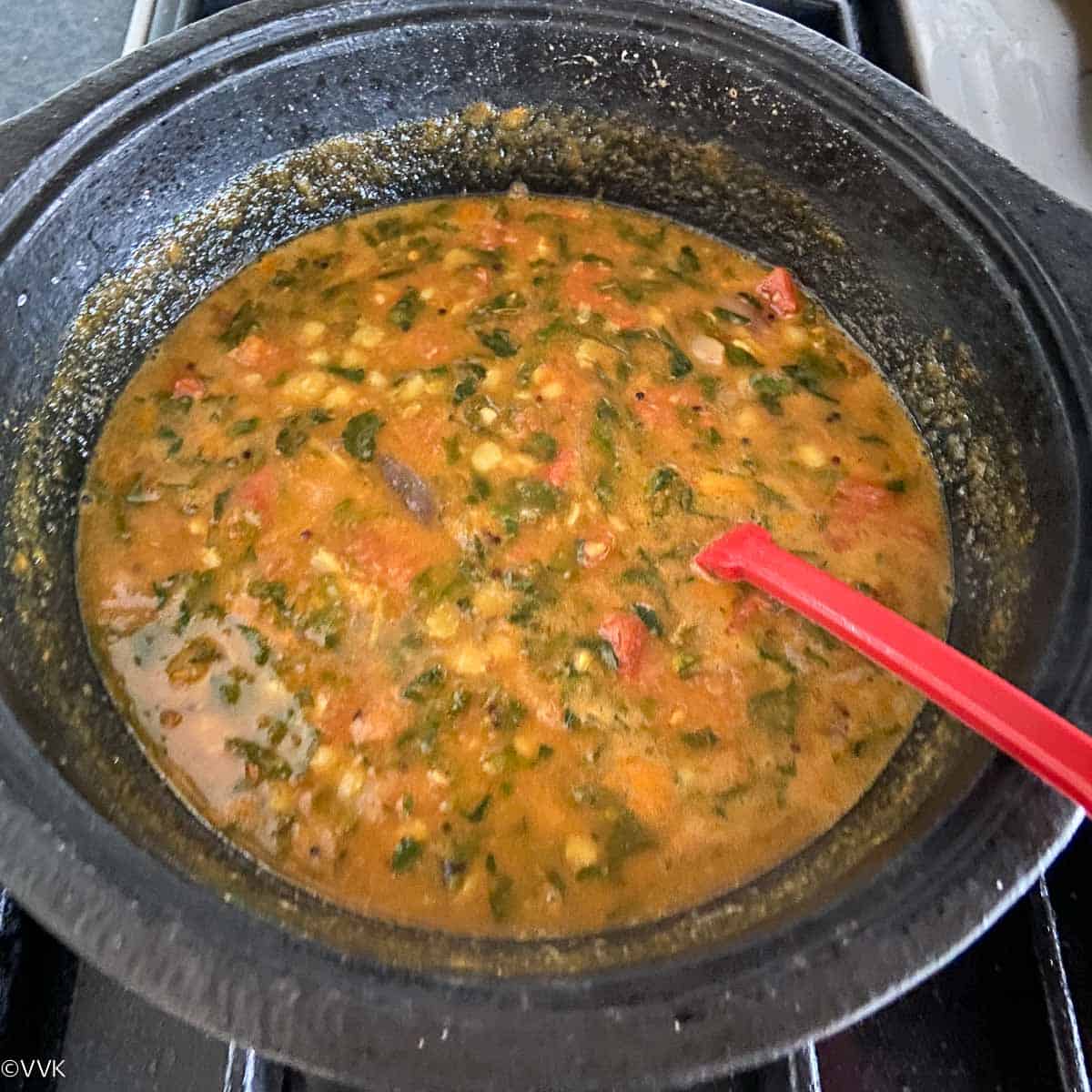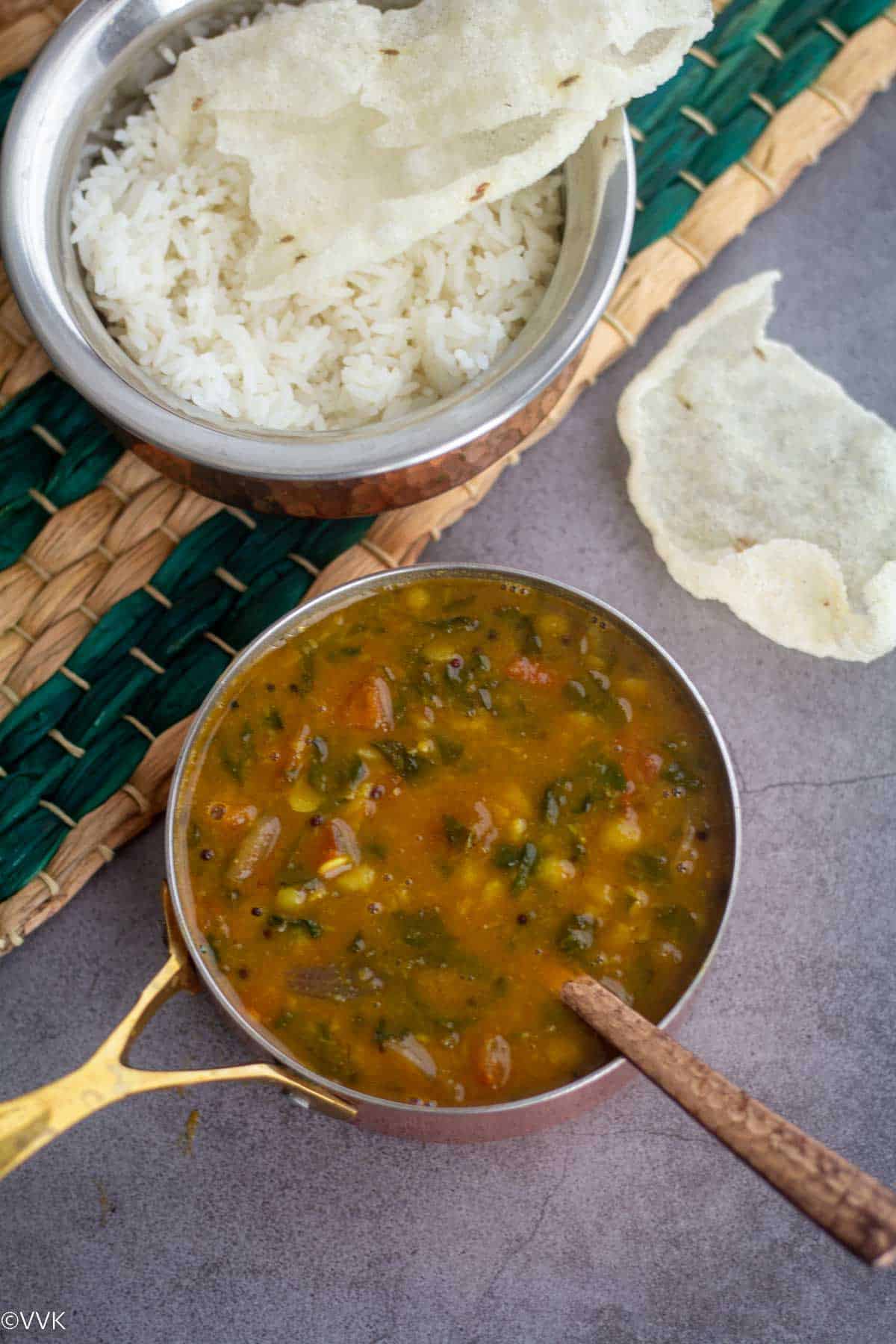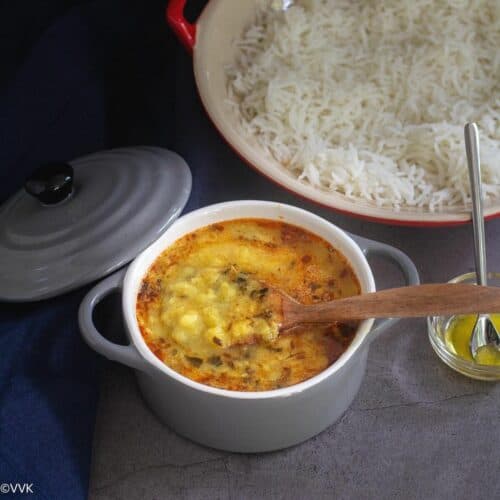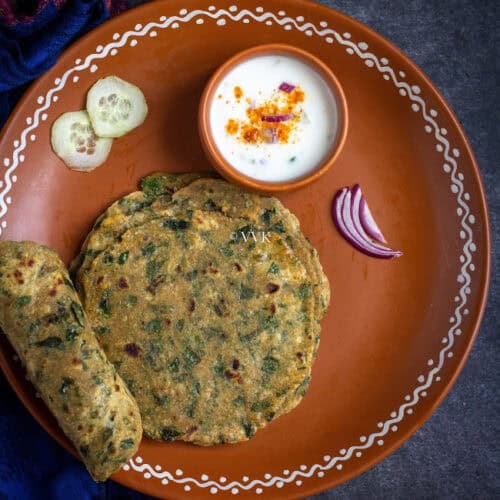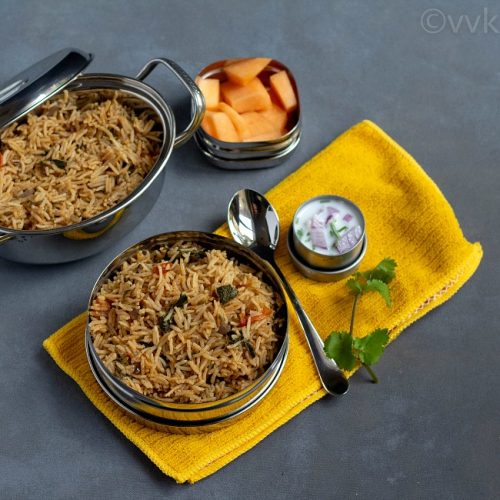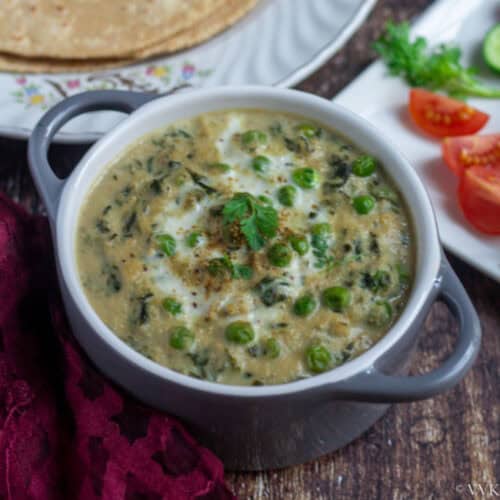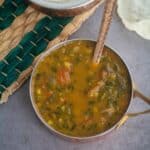Sambar & Kuzhambu
Sambar and kuzhambu are the quintessential dishes of Tamil Nadu. Both sambar and kuzhambu are perfect rice accompaniments, and I have quite a few recipes on my blog. Today I will share one more sambar recipe with fresh greens – fenugreek. In Tamil, we call fenugreek leaves vendhaya keerai; in Hindi, we call it methi. I mentioned this in my raw mango sambar post; in our household, we call arachuvitta sambar varieties sambar, and the rest are kuzhambu, even if it has toor dal. That’s why you can see me using vendiya keerai kuzhambu in the title. Call it your preferred way; this sambar recipe is a very beginner-friendly and great way to use those healthy fenugreek leaves. Like keerai kootu, keerai kuzhambu is also quite popular. In our home, we call it puli itta keerai, meaning spinach with tamarind. This sambar is like any other sambar recipe; instead of a vegetable/vegetables, we are using fenugreek leaves. You can make this sambar with amaranth greens or Malabar red spinach, or other spinach varieties that are available locally.
Methi Leaves
Fenugreek leaves fall under the spinach family, and India is the most significant producer of these greens. Fenugreek leaf is a fantastic herb with a lot of medicinal value. We use fenugreek in different forms in Indian cooking. For example, we use methi/fenugreek seeds for tadka, kasoori methi (dried methi leaves) for dal and some paneer gravies, and fresh methi leaves for sambar, dal, paratha, pulao, etc.
Ingredients required
I am sharing the ingredient list in the order we add them while cooking. Please check the recipe card for exact measurements. Toor dal & turmeric: Like every other sambar recipe, we also need toor dal for this methi sambar. I usually pressure cook my toor dal by adding a pinch of turmeric powder and a few drops of oil. Oil is optional, but I got used to adding it as it yields nicely cooked and mushy dal. To Temper: We need oil, mustard seeds, dried red chilies, and asafoetida. As we make sambar with fenugreek leaves, I don’t use fenugreek seeds while tempering. Shallots: While you can use onion, I highly recommend shallots as they yield amazing flavor to this sambar. But feel free to use regular onions, white, red, or yellow. Tomato: We also need one big tomato for this recipe. It adds flavor and some color. Fresh fenugreek leaves: I used approximately 2 cups of fresh fenugreek leaves. Remove the stems and yellow leaves and chop them roughly. Tamarind paste: I used my homemade tamarind paste. You can use store-bought one or gooseberry-sized tamarind flesh. In that case, soak it in one cup of water and extract the juice. Sambar powder: I used my homemade sambar powder. You can use store-bought sambar powder or kuzhambu thool. Apart from these ingredients, we also need salt, water, jaggery, and rice flour to prepare the slurry, which helps to thicken the sambar.
Dietary specifications and storage suggestions
This vendhaya keerai sambar is naturally vegan and nut-free. Use gluten-free asafoetida, or skip it for a gluten-free version. This sambar stays good for 4 to 5 days when refrigerated. When needed, reheat only the required amount. Do not reheat and refrigerate again. You can make it a part of your weekend meal prep.
How to make vendhaya keerai sambar
Pressure cook the dal
Pressure cook the toor dal by adding turmeric powder, and few drops of oil, and 1 cup of water for 4 to whistles. Let the pressure subside and if you are using rice flour, add it to the dal and mix and mash it nicely.
Prepare the sambar
Heat a kadai or saucepan and add oil. When the oil is hot, add the mustard seeds, red chili, asafoetida. When the mustard seeds splutter, add the shallots and saute until it turns translucent.
Then add the chopped tomatoes and fenugreek leaves. Add salt as well and cook for 5 minutes over medium-low heat. The greens will ooze out water, and it’s fine.
Add the tamarind water and sambar powder mixed in ¼ cup of water. Simmer it for 8 to 10 minutes until the raw smell goes off.
Finally, add the toor dal mix and jaggery.
Mix well and simmer for about 5 minutes and turn off the heat. And that’s it. Yummy methi sambar is ready. Enjoy it with rice.
Recipe Notes
Adjust the tamarind quantity according to the tanginess of the tomatoes.Tomatoes are entirely optional. You can skip them as well. Instead of shallots, you can use regular onions.Adjust the salt and spices as per your preference.
VVK Tips
If you are getting started with fenugreek leaves and worried about the bitterness, reduce the measure to one cup or soak it in hot water for 30 minutes and discard the water. This soaking process helps to reduce the bitterness of the fenugreek leaves. Adding a small amount of jaggery helps to balance the flavors. Even though it’s an optional ingredient, I highly recommend it. Rice flour is optional. As I mentioned before, it helps to thicken the sambar. If you add more dal than the below-mentioned measure, you can skip the rice flour. Mixing the sambar powder in water and adding it to the sambar prevent lumps.
More methi recipes
Have you made this recipe?
If you’ve made this methi sambar, please share your photos with me on Pinterest, Facebook, Instagram, YouTube or Twitter – I will be delighted to see your results!
📖 Recipe
Update notes: Earlier posted on 2015. Now updated the recipe card with nutritional information and new step-wise pictures.
